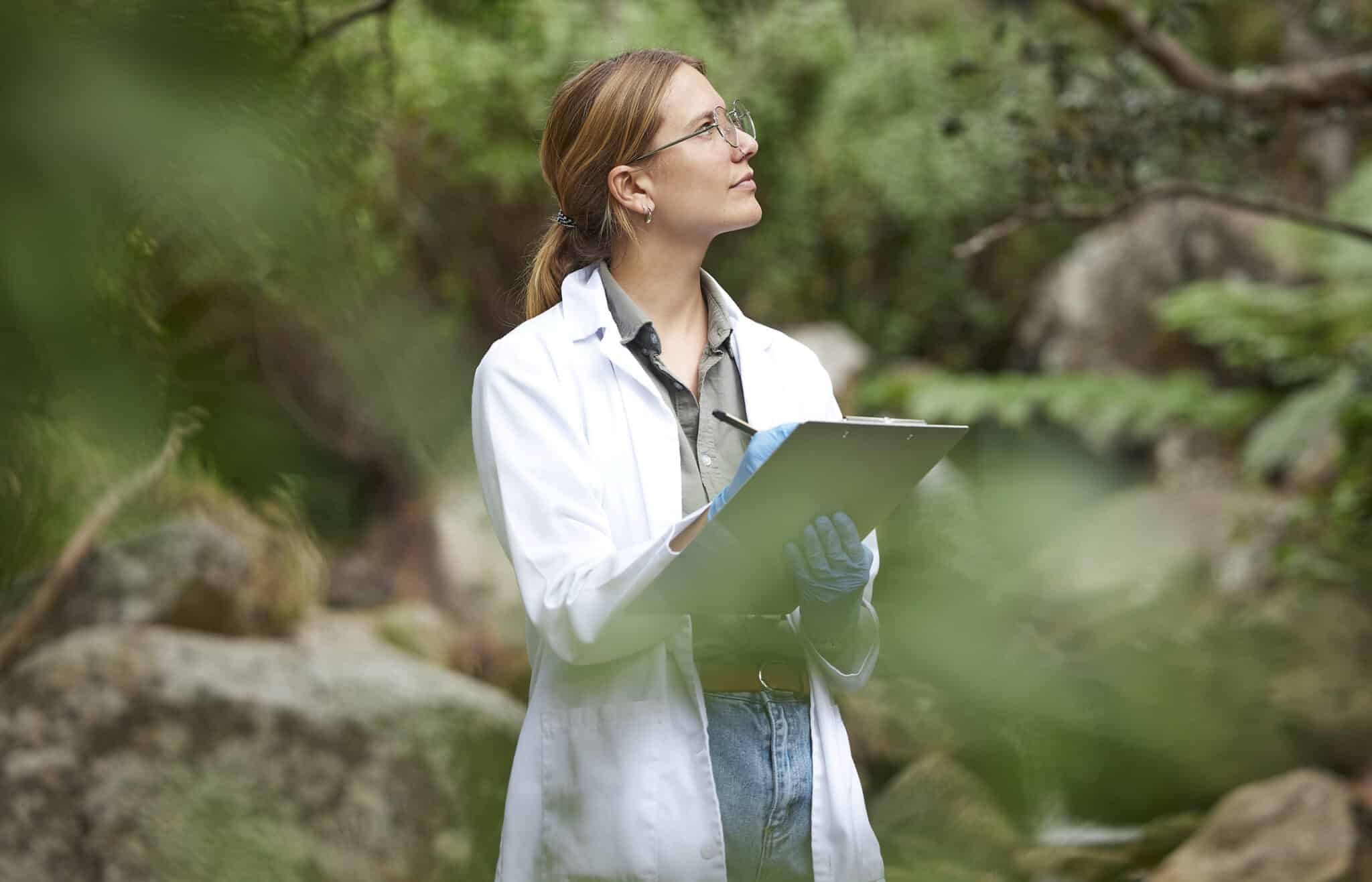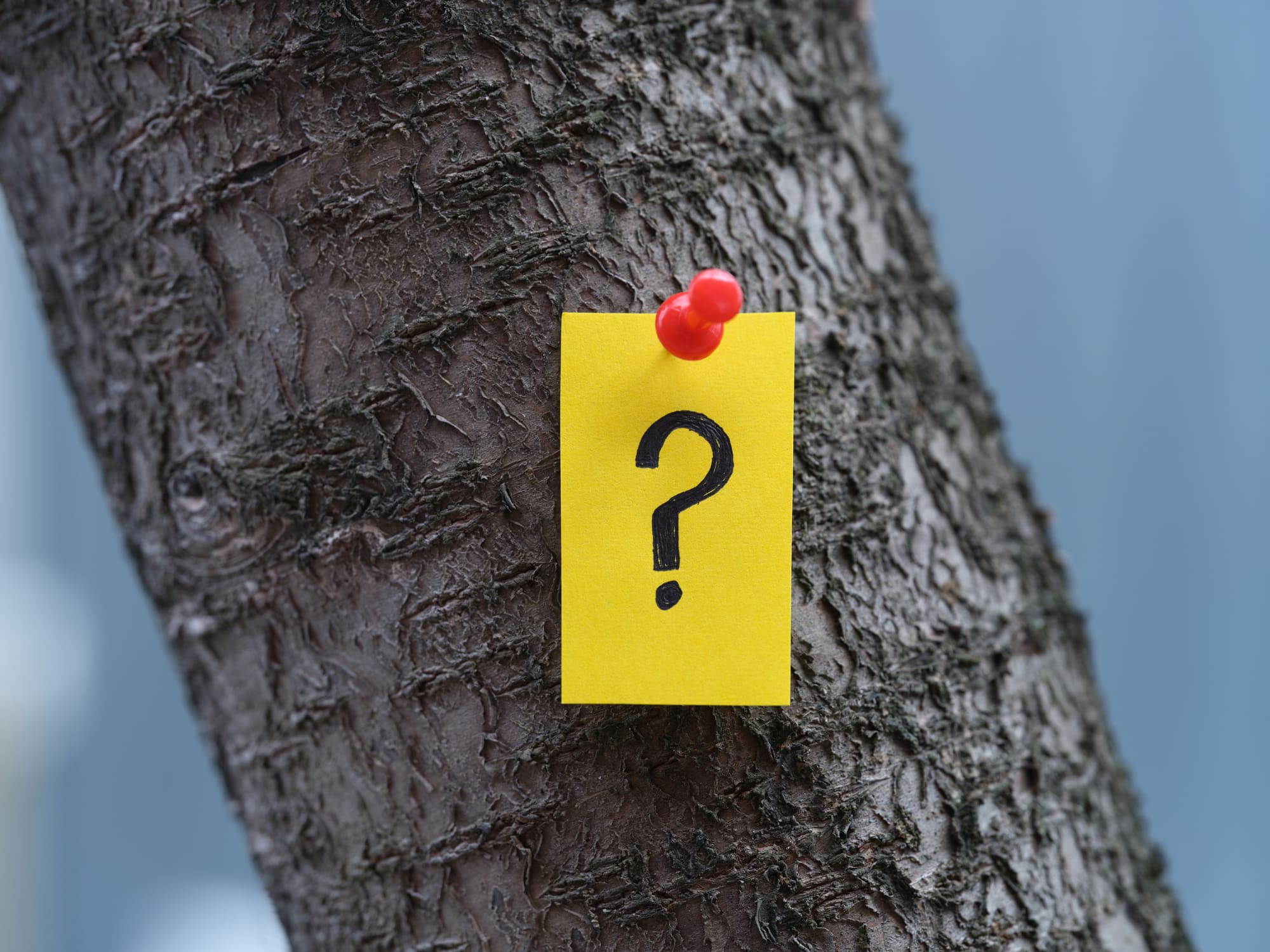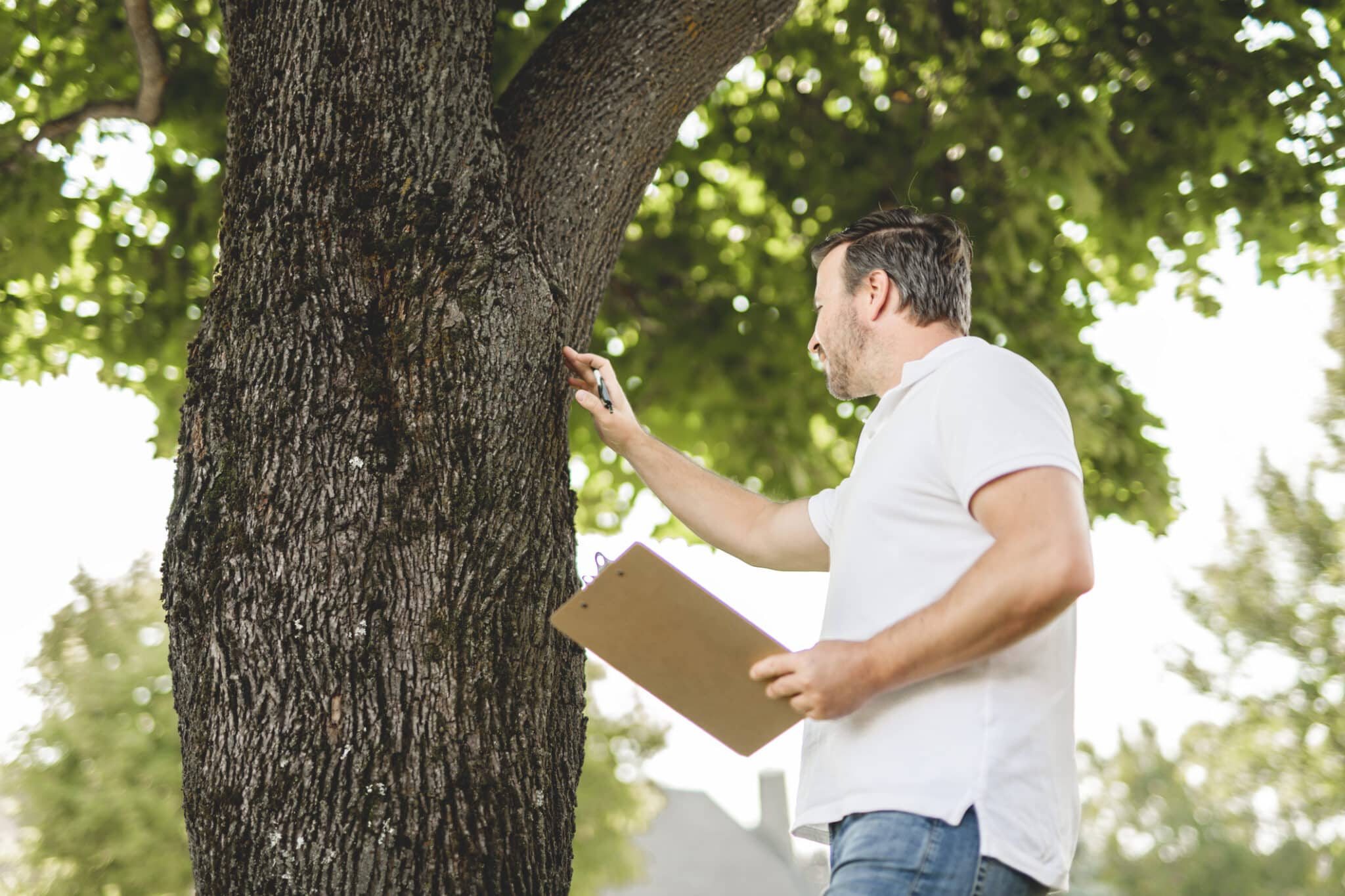Why Scheduling a Tree Health Inspection Is Vital This February
A tree health inspection helps spot diseases, pests, and weak spots before they turn into big issues. Experts check the tree’s structure, roots, and soil using special tools. Regular check-ups can save money on repairs and help your trees live longer.
What Is a Tree Health Inspection?
A tree health inspection is a way to check a tree’s overall condition and catch problems before they get worse.
As a professional arborist, I look at things like tree structure, branch strength, root health, soil condition, and signs of disease or pests.
During an inspection, I start with a visual check, looking for cracks, dead branches, cavities, or visible fungus that might mean decay.
I also check the leaves—if they’re discolored, falling off too soon, or wilting, it could mean a fungal infection, bacterial disease, or a lack of nutrients.
Next, I examine the roots.
If I see exposed or damaged roots near the trunk, it could mean root rot or stability issues.
Weak roots can make a tree unsafe, especially in windy areas.
Soil health matters too.
Poor soil can lead to weak trees, water issues, and nutrient shortages.
I may test the soil’s pH level and nutrient content to see if we need to make any adjustments for better growth.
At the end of the tree health inspection, I give recommendations based on what I find.
This might include pruning, fertilizing, treating pests, or in some cases, removing the tree if it’s a safety risk.
Regular checkups help keep trees strong, healthy, and better able to handle stress from the environment, especially in places like Arlington, TX, where climate conditions can impact tree growth.

Why Tree Health Inspections Matter in Arlington, TX
Living in Arlington, TX, I know how tough the hot summers and mild winters can be on trees.
Without regular evaluations, trees can silently suffer from diseases like oak wilt, hypoxylon canker, and bacterial leaf scorch—problems that spread fast and cause lasting damage.
Tree diseases love Arlington’s climate, especially after droughts followed by heavy rain.
That sudden shift weakens trees, making them easy targets for fungi and pests.
If you have mature oak trees, oak wilt is a serious concern—it can kill a tree in just a few months if ignored.
But disease isn’t the only risk.
Cracks, weak branches, and unstable roots often go unnoticed until strong winds or storms cause real damage.
Regular tree evaluations can catch these issues early and prevent costly property damage.
If you want your trees to stay healthy, strong, and safe, now’s the time for a professional tree assessment.
A certified arborist can spot hidden problems and suggest treatments that work for Arlington’s climate.
Want to do more for your trees?
Learn about tree and shrub healthcare and keep your landscape thriving.
Signs Your Trees Might Need a Check-Up
Trees don’t always make it obvious when something’s wrong, but there are clues to watch for.
Rotting or decaying wood is a big red flag.
If you see cracks, holes, or crumbling wood, your tree could be weak and unstable.
Fungus growth, like mushrooms at the base, can also mean the tree is rotting inside, which puts nearby people and property at risk.
If your tree’s leaves change color or fall off when they shouldn’t, it might have a disease, a pest problem, or lack key nutrients.
If leaves turn yellow, or brown, or develop spots, scheduling a tree health inspection early can stop the problem from spreading.
Pay attention to leaning trees, dead branches, or peeling bark—these need fast action.
A tree that suddenly leans might have damaged roots, making it more likely to fall.
Peeling bark or deep cracks in the trunk can also signal serious issues.
Catching these warning signs early can save you from expensive damage or losing the tree completely.
If you spot any of these issues, calling in a professional for a thorough evaluation can help diagnose the problem and keep your trees thriving in Arlington, TX.
How I Inspect a Tree’s Health as a Professional Arborist
When I conduct a tree health inspection, I start with a careful visual assessment.
I look for signs of disease, pests, deadwood, or weak spots.
I examine the bark, branches, and leaves for discoloration, cracks, or strange patterns that could signal trouble.
But I don’t stop there.
I use specialized tools to check the tree’s stability and internal health.
An increment borer lets me take a small wood sample to study growth rings.
A resistograph helps me measure how strong the wood is, showing hidden decay without harming the tree.
If I need a deeper look, I might use sonic tomography, a tool that maps the inside of a tree by measuring sound waves moving through the wood.
I also check what’s happening underground.
I assess the soil’s moisture, nutrients, and compaction to see if the tree is getting the support it needs.
I also look for root rot or damage that could weaken the tree’s structure.
If you need a professional tree health inspection in Arlington, TX, trust S&P Tree Service to provide detailed evaluations and solutions to keep your trees strong and healthy.
How Often Should You Check Your Trees’ Health?
Keeping your trees healthy starts with regular checkups.
Most trees should undergo a tree health inspection at least once a year to catch early signs of disease, pests, or weak branches before they turn into costly problems.
Some trees need more frequent checkups.
If you have older trees, disease-prone species, or trees near walkways or buildings, checking them every six months is a smart move.
Bad weather—like storms or long droughts—can also weaken trees, so it’s best to inspect them after extreme weather hits.
Here in Arlington, TX, trees face scorching summers and sudden storms.
Heat stress and drought can weaken them, making them more vulnerable to diseases like oak wilt and bacterial leaf scorch.
Scheduling routine evaluations helps ensure your trees get the care they need, like proper pruning, soil treatment, and routine maintenance.
If you see dead branches, fungus, or cracks in the trunk, don’t wait for your next scheduled inspection—call an arborist right away.
The sooner you act, the better the chance of saving your tree instead of losing it.
Early Warning Signs of Tree Diseases and Pest Infestations
If tree diseases and pests go unnoticed, they can destroy your landscape.
Here in Arlington, TX, some of the biggest threats include oak wilt, hypoxylon canker, and bacterial leaf scorch.
These diseases weaken trees, making them more likely to break or fall.
Catching the problem early through a proper tree health inspection can prevent serious damage.
Pests can be just as dangerous.
Emerald ash borers, oak leaf rollers, and bark beetles attack trees from the inside, often killing them before you even realize there’s an issue.
Watch for wilting leaves, unusual bark color, or too many falling leaves—these could mean trouble.
Small holes in the trunk or piles of sawdust-like frass near the base often point to boring insects at work.
A routine tree health inspection can help detect these signs early.
Fungal infections are another warning sign.
Mushroom-like growths at the base, cankers on branches, or oozing sap can mean your tree is rotting from within.
A weak or decaying tree can quickly become a hazard.
The best way to protect your trees is by taking action early.
Scheduling a tree health inspection can catch issues before they get out of hand.
If you notice any of these warning signs, don’t wait.
Seek professional assistance—visit S&P Tree Service’s pest control services to safeguard your trees before it’s too late.
The Role of Soil Health in Keeping Trees Strong
Good soil is the key to healthy, long-lasting trees.
Without the right mix of nutrients, water, and structure, trees can’t absorb what they need to grow strong.
In Arlington, TX, the soil naturally has a high pH, usually between 7.5 and 8.5.
This can make it harder for trees to get the nutrients they need, so managing the soil properly is a must.
Why Testing Your Soil Matters
Testing your soil gives you important details about nutrient levels, compaction, and water retention.
A professional can check these factors and decide the best way to fix any issues, whether that means changing fertilizer use or improving aeration.
Regular tree health inspection can help detect soil-related problems early, preventing long-term damage.
Better Watering and Fertilization
With Arlington, TX’s hot summers, soil can lose moisture fast.
Watering too much or too little can hurt tree roots, making them easy targets for pests and disease.
Using the right fertilizer can also help balance the effects of high pH, making sure trees get the nutrients they need.
If you ignore soil health, trees become weak and prone to failure.
Getting soil checked regularly, along with smart watering and fertilizing, helps trees grow deeper roots, stronger branches, and stand up to harsh conditions.
Scheduling a professional tree health inspection ensures that trees stay strong and thrive for years to come.
How Tree Inspections Keep Your Trees Safe
Tree failures don’t happen overnight—they build up over time due to hidden issues you might not notice until it’s too late.
A tree health inspection helps catch these problems early, lowering the risk of sudden collapses that could damage your property or hurt someone.
During a tree health inspection, experts look for cracks, weak branch connections, and internal decay that could cause trouble later.
If a tree seems unstable, bracing and cabling can help.
These supports distribute weight and strengthen weak limbs, keeping trees steady during strong winds or heavy storms.
When installed and maintained correctly, tree cabling and bracing can help support a tree’s structure, allowing you to keep mature trees instead of removing them.
Tree vitality isn’t just about what you see above ground.
Problems like compacted soil, poor drainage, and root damage can weaken a tree’s base, making it unstable.
A professional tree health inspection checks these factors to see if your tree needs extra care.
Don’t wait for a tree to fall before acting.
Routine assessments catch problems early, keeping your trees strong and your property safe all year round.
If you’re in Arlington, TX, scheduling regular checkups can prevent costly damage and ensure your trees thrive.
When Should You Call a Pro for Tree Removal?
Sometimes, saving a tree just isn’t possible.
If a tree is badly diseased, weak, or a danger to your home, it’s time to bring in an expert.
Big cracks, dead branches, heavy fungal growth, and leaning trunks are clear signs the tree might not make it.
One big concern in Arlington, TX, is oak wilt—a fast-moving fungal disease that can kill an oak tree in just a few months.
If you think your tree might have oak wilt or another serious issue, don’t wait to consult a professional.
A proper tree health inspection can also reveal root damage, another major warning sign.
Trees with badly damaged root systems can become unstable, making them more likely to fall.
Construction work, soil erosion, and pests can make the problem worse, so it’s best to act fast.
Not sure if removal is the right move?
S&P Tree Service can check out the tree and go over your options.
If taking it down is the only choice, they provide safe and efficient removal to keep your property protected.
Learn more about their tree removal service and book an evaluation today.
Why Hiring a Certified Arborist is the Best Choice for Tree Health
If you want healthy, strong trees, hiring a certified arborist is one of the best decisions you can make.
These experts have the skills to assess trees, spot problems early, and recommend the right solutions through tree health inspection.
Certified arborists go through intensive training and continuous education to stay on top of the latest tree care methods.
This means they can identify issues like pests, nutrient shortages, or early signs of disease before they turn into major problems.
Without this expertise, tree health issues often go unnoticed—leading to expensive removals or even property damage.
Regular tree health inspection ensures these problems are caught early and addressed properly.
One major benefit of hiring a certified arborist is getting a custom treatment plan tailored to your trees’ specific needs.
Whether it’s adjusting soil conditions, pruning for strength, or applying targeted pest control, every step is backed by science and hands-on experience.
Arborists also follow strict industry standards to ensure their work doesn’t harm the environment.
If you live in Arlington, TX, you can trust a certified arborist to handle local tree challenges like drought stress and diseases such as oak wilt.
Taking action now can keep your trees healthy and save you from costly removals later.
What to Do After a Tree Health Inspection
Now that your tree health inspection is done, it’s time to take action.
Your arborist will give you advice based on the inspection to make sure your trees get the care they need.
Following the Care Plan
If the evaluation finds problems, it’s important to act fast.
You may need to prune dead or weak branches, adjust soil conditions for better nutrients, or use pest control treatments to stop infestations.
Taking care of these issues early keeps them from turning into bigger problems.
If your tree has weak spots, cabling and bracing can give it extra support.
If pests or diseases are a concern, treatments like fungicides, insecticides, or deep-root fertilization can help bring it back to health.
Scheduling Follow-Ups
Tree care doesn’t stop after one inspection.
Regular check-ups help make sure treatments are working and catch new problems early.
If you have older trees, trees that face strong storms, or species prone to oak wilt, a yearly tree health inspection is a smart choice.
Staying ahead of issues keeps your trees healthy and your landscape looking great in Arlington, TX.

Tree Health Inspection FAQs
How often should I get my Tree Health Inspection?
Once a year is best for most trees, but older or high-risk trees may need more frequent checks. If a storm has damaged your tree or you see signs of disease, don’t wait—schedule a tree health inspection right away.
What are some early signs of tree disease?
Watch for unusual leaf color, fungus, dead branches, or cracks in the trunk. Pests like bark beetles or emerald ash borers can also mean your tree has health problems that need quick action.
Can a tree inspection help avoid removal?
Yes! Catching diseases, weak spots, or pest issues early can help save a tree. With the right treatments, pruning, or support, many trees can be stabilized instead of removed.
What tools do arborists use to check tree health?
Arborists use tools like resistographs, increment borers, and sonic tomography to find internal decay without harming the tree.
Why does soil health matter for trees?
Soil affects how well a tree gets water and nutrients. In Arlington, TX, the soil is often alkaline, which can make it harder for trees to absorb nutrients. Changing how you fertilize and water can improve soil and help trees thrive.


